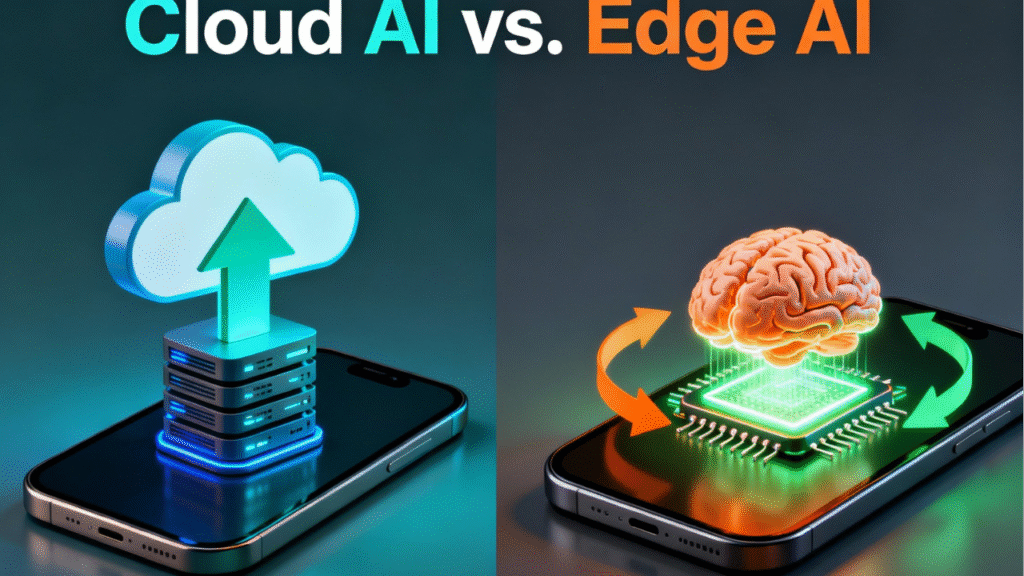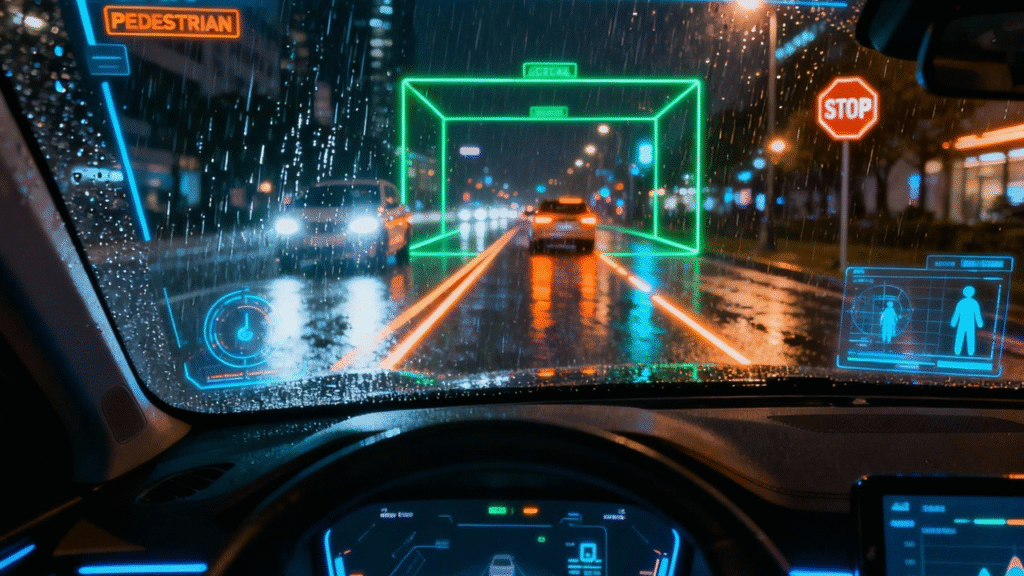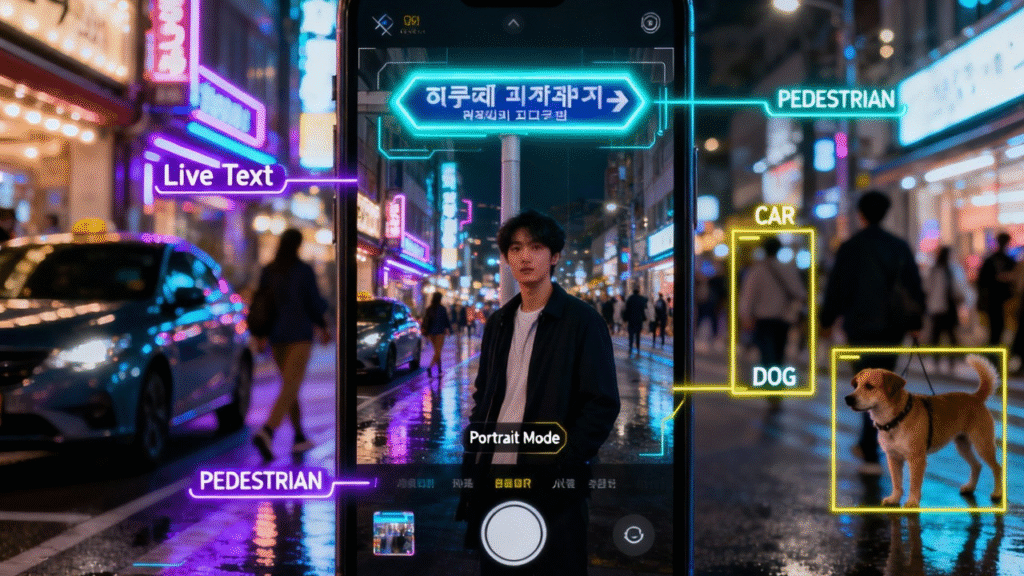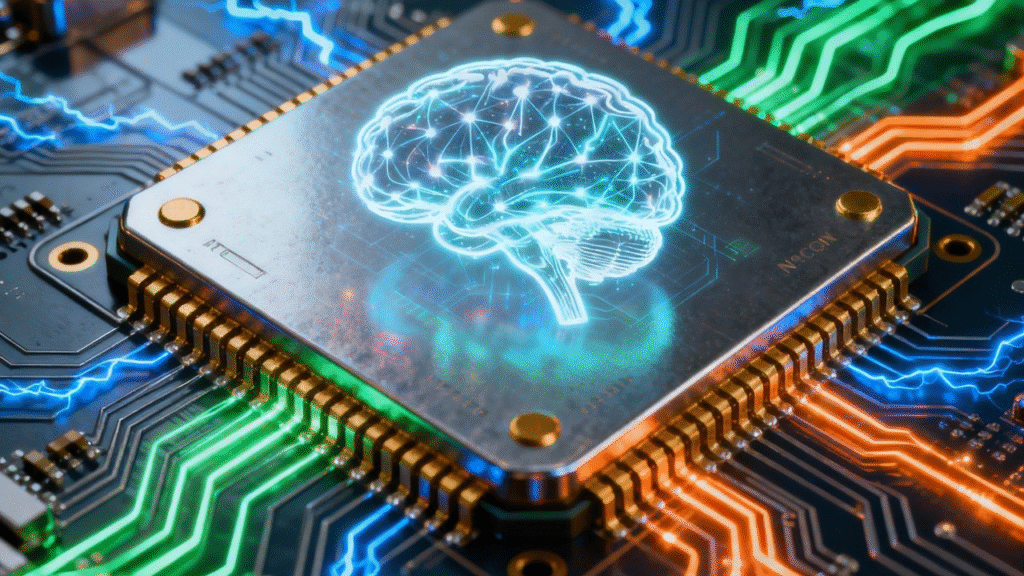Edge AI Explained: The On-Device Revolution Happening in Your Pocket (And Why It Changes Everything)
Alright, imagine this: you’re standing there, half-awake, just wanting to know if you need an umbrella, and your smart speaker suddenly goes all “processing…” on you. The light’s spinning like it’s trying to crack a safe. Seriously? It’s just the weather, not rocket science. That silent moment? Your question’s probably flying through a maze of cables, getting dissected by some faceless server farm, before it finally coughs up whether you need a raincoat. And honestly, isn’t it a little creepy not knowing where your random voice notes—or that accidental bathroom selfie—actually end up? Like, who’s got their hands on that stuff, anyway?
For ages, the big AI story has been about these faceless, far-off “brains” floating around in the cloud. But what if your gadgets got a brain of their own? Not in some sketchy server warehouse, but right there—inside your phone or laptop or whatever you’re actually holding. Wild, right?
Well, surprise—it’s not science fiction anymore. It’s happening right now, and people call it Edge AI.
Fonte: @MATLAB
Edge AI basically means the whole AI thing gets yanked out of the cloud and crammed into your everyday devices: your phone, your car, your smart watch, your laptop, your toaster (okay, maybe not the toaster…yet). The payoff? Stuff gets way faster, your personal data chills out on your own device, and everything just works more smoothly. Like, less waiting, more doing.
This guide is gonna break down Edge AI in real-people terms—no soul-numbing techno-babble, promise. We’ll get into why it’s blowing up in 2025 (hint: new “AI PCs” and those monster chips from Apple and Qualcomm). Plus, you’ll probably realize you’re already using Edge AI on the daily, without even thinking about it. Magic, right?
What is Edge AI?
Alright, let’s break this down because, honestly, every time someone says “Edge AI,” half the room just nods and pretends they get it. But here’s the vibe: Edge AI is basically the rebellious younger sibling of Cloud AI. And to really get it, let’s roll with the “Netflix Analogy,” because who hasn’t binged a show or two?
Cloud AI vs Edge AI: Key Differences
Cloud AI = Netflix Streaming
Picture this: you’re about to hit “play” on Stranger Things for the 10th time. If you’re streaming, you’re 100% at the mercy of your Wi-Fi. That episode doesn’t actually live on your TV—it’s chillin’ in some giant data center. You hit play, your TV begs the Netflix gods for the file, and after a bit of digital back-and-forth, it beams onto your screen. Same deal with the classic AI we’ve been using. You ask Siri something dumb—she ships your question off to a data center, some beefy AI chews on it, and then, after a beat, spits out an answer.
- Pros? The AI up there is a beast. Massive, stacked with power, basically the Hulk of computing.
- Cons? Gotta have internet. There’s always that tiny lag. And, yeah, your data’s flying out of your device and into the cloud, which, let’s be honest, is a little sketchy privacy-wise.
Edge AI = Downloaded Movie Vibes
Now, flip the script. Say you’re getting on a flight and you actually remember to download a movie. Now the whole file’s sitting on your tablet, smug and self-sufficient. Zero buffering, no internet drama, just pure cinematic bliss—even when you’re 30,000 feet up. That’s Edge AI. The smarts are baked right into your gadget. It does the heavy lifting itself, no cloud middleman required. Fast, private, always ready to go—even if you’re stuck somewhere with no signal and three percent battery.
- Upsides? Man, it’s FAST. Like, blink-and-you-miss-it fast. It’s also PRIVATE—your business stays your business, ’cause your info never leaves your device. And guess what? It’s RELIABLE, even if your Wi-Fi’s throwing a tantrum.
- Downsides? Well, these AIs gotta be lean and mean. No giant models hogging up memory or draining your battery like a vampire. Gotta keep it tight, you know?

Why Edge AI is Growing Fast
Speed (Low Latency)
Latency is just a fancy word for “waiting around.” Sometimes a little lag is just annoying. But if your car’s about to hit something? Yeah, “annoying” becomes “catastrophic.” Edge AI handles stuff locally, which means it makes decisions instantly. Real-life? Self-driving cars. They can’t exactly pull over and ask the cloud if that’s a pedestrian or a lamppost. They gotta process that info in milliseconds. If this doesn’t happen on-board, people get hurt. Simple as that. (Source: Synopsys Automotive Solutions)

Privacy (On-Device Security)
With all the news about hacks and leaks, people care about privacy more than ever. Edge AI’s basically a bodyguard for your data. Look at Apple’s Face ID. When you unlock your iPhone with your mug, the magic happens right inside the chip. That fancy math that recognizes your face? It lives and dies on your phone—never goes to Apple, never hits the internet. Your face stays your business. That’s Edge AI flexing hard. (Source: Apple’s Official Platform Security Guide)
Reliability & Cost Savings
Edge AI doesn’t care if you’re sitting in a Wi-Fi dead zone. It just works. Plus, companies love it ’cause it saves them boatloads of cash. Case in point: Smart security cams. The good ones can spot your dog or a sketchy stranger even if the internet goes out. Only the important stuff gets uploaded—so you’re not paying for hours of “cat walking by” footage in the cloud. (Source: Forbes Tech Council)
Everyday Applications of Edge AI
Look, this isn’t some Black Mirror episode—Edge AI is already all over your stuff, hiding in plain sight. Your phone? Total powerhouse. That dreamy, Instagram-worthy Portrait Mode blur? Edge AI’s pulling the strings. Need your camera to translate that weird French menu in real time? Boom, Edge AI’s on it, no lag. And those creepily spot-on keyboard guesses? Yep, your phone’s low-key psychic, all thanks to Edge AI grinding away while you’re scrolling memes. Kinda freaky, honestly.

Those Amazon Echo or Google Nest things? They’ve finally leveled up. Now, when you shout, “Turn off the lights!” they just do it. No more waiting for your Wi-Fi to crawl out of its existential crisis. In your car, ever notice how it seems to know when you’re about to drift outta your lane? That’s Edge AI flexing under the hood, chewing through data from all those tiny cameras and sensors to keep you safe. Even advanced humanoid robots rely on it to react to the world in real-time.
The Future: Hybrid AI, NPUs, and AI PCs
So, is Edge AI about to drop-kick Cloud AI into the trash? Nope. They’re teaming up. Cloud AI still matters—big time. You need those monster data centers to train the really huge models (think: the brains behind ChatGPT). Edge AI is the secret sauce behind all that snappy, private, “did my phone just read my mind?” magic. It’s what makes your stuff feel less like a dumb brick and more like a sci-fi sidekick.
Now, let’s talk about the new hotness: “AI PCs” and the mighty NPU. NPU stands for Neural Processing Unit, which is just a fancy way of saying “the chip that absolutely demolishes AI tasks.” Imagine your CPU as the jack-of-all-trades, your GPU flexing on graphics, and then the NPU, basically the AI brainiac of the bunch. New laptops—think those Snapdragon X Elite beasts from (Source: Qualcomm) or Apple’s shiny M-series—come packing these chips. AI features just zip along, battery life doesn’t flatline, and your laptop suddenly feels like it actually gets you. (Source: Intel’s NPU Overview)

Product Spotlight: The New Wave of AI PCs
Want to experience the power of on-device AI? The latest laptops powered by chips with dedicated NPUs are where the action is. Check out models featuring the Snapdragon X Elite or Intel Core Ultra processors.
(Product links coming soon)
Conclusion: The AI Revolution is Coming Home
For ages, AI was just this mysterious force hanging out in some distant server farm. But now? It’s moving in. Edge AI is dragging all that smarts down from the clouds and shoving it right into your pocket. This on-device processing is a core component of how future tools like Autonomous AI Agents will operate. Tech’s getting faster, more private, and actually reliable. The next big thing isn’t just building supercomputers in the sky—it’s about sneaking those mini-brains into everything you touch. AI isn’t just out there anymore. It’s moving in. Get ready for some serious houseguests.
FAQ: Edge AI Questions Answered
What is Edge AI in simple terms?
In simple terms, Edge AI means the “brain” of the AI runs directly on your device (like your phone or smart speaker), instead of on a distant cloud server. It’s like having a downloaded movie instead of streaming one—it’s faster, works offline, and keeps your data private.
How does Edge AI differ from Cloud AI?
The main differences are speed, privacy, and reliability. Edge AI is much faster because there’s no internet delay (latency). It’s more private because your data doesn’t leave your device. And it’s more reliable because it can work without an internet connection. Cloud AI, on the other hand, can handle much larger and more complex AI models but requires a constant connection.
Why is Edge AI important for smartphones?
Edge AI is crucial for modern smartphones because it powers many of their “smart” features in real-time. This includes computational photography (like Portrait Mode), Face ID security, live language translation through the camera, and predictive text. These features need to be instant and secure, which is only possible with on-device processing.
What are NPUs and how do they work?
An NPU (Neural Processing Unit) is a specialized chip inside a device that’s designed to run AI tasks with extreme efficiency. Think of it as a dedicated “AI brain” that handles AI calculations, freeing up the main processor (CPU) and graphics processor (GPU). This allows your device to perform complex AI features quickly without draining the battery.
Is Edge AI replacing Cloud AI?
No, Edge AI is not replacing Cloud AI. The future is a hybrid model where they work together. The cloud is still essential for training massive AI models, while the edge is used to run smaller, efficient versions of those models for fast, real-time tasks on your devices. They complement each other’s strengths.
Want to Stay Ahead of the AI Curve?
This stuff is moving fast. Subscribe to our newsletter for more no-nonsense guides on the tech that’s actually shaping our future.
Newsletter coming soon!







